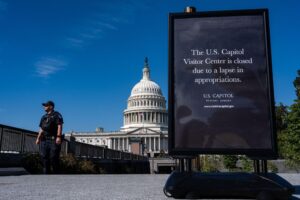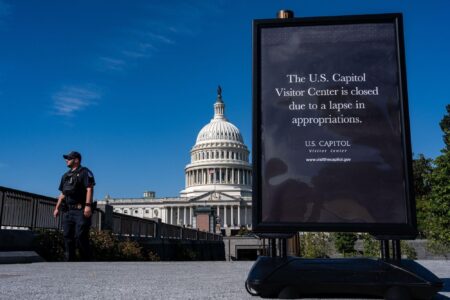NAACP Takes Legal Action Against Federal Cuts to DEI Funding in Public Education
NAACP Files Suit Over Federal Reductions in Diversity, Equity, and Inclusion Funding
The NAACP has initiated a lawsuit challenging the U.S. Department of Education’s recent decision to reduce financial support for Diversity, Equity, and Inclusion (DEI) programs in public schools nationwide. This legal move highlights growing concerns about the federal government’s commitment to addressing systemic inequities in education through targeted initiatives. The organization argues that these budget cuts threaten to reverse important strides made toward creating inclusive and equitable learning environments, disproportionately impacting students from historically marginalized communities.
The lawsuit emphasizes several critical issues, including:
- Decreased funding for DEI-focused professional development and curriculum enhancements
- Widening achievement gaps among students of different racial and socioeconomic backgrounds
- Undermining federal mandates aimed at ensuring equal educational opportunities for all
The NAACP seeks to compel the Department of Education to reverse these cuts and reinstate funding levels that support the expansion and sustainability of DEI initiatives, which are vital for fostering inclusive school cultures and promoting community engagement.
| Funding Area | 2019‚Äď2022 Allocation | 2023 Budget Reduction |
|---|---|---|
| DEI Staff Training | $48 million | -$16 million |
| Inclusive Curriculum Development | $32 million | -$11 million |
| Student Equity Support Services | $27 million | -$9 million |
Examining the Civil Rights Concerns Behind the Legal Challenge
The NAACP’s lawsuit brings to light significant civil rights issues tied to the federal funding cuts for DEI programs. Legal analysts argue that these reductions may violate federal laws designed to protect students from discrimination and ensure equitable access to education. The complaint asserts that the Department of Education’s actions disproportionately harm vulnerable student populations by limiting access to essential resources that support historically underserved groups.
Key legal arguments include:
- Disproportionate Impact: Evidence indicates that funding cuts could deepen racial and economic disparities in educational outcomes.
- Noncompliance with Federal Laws: The reductions may conflict with provisions of the Civil Rights Act and other statutes prohibiting discrimination in federally funded programs.
- Insufficient Transparency: Critics contend that the decision-making process lacked adequate consideration of the consequences for marginalized students.
| Legal Framework | Objective | Effect of Funding Cuts |
|---|---|---|
| Civil Rights Act (Title VI) | Prohibits discrimination based on race, color, or national origin in federally funded programs. | Increased risk of discriminatory educational practices. |
| Individuals with Disabilities Education Act (IDEA) | Guarantees services and accommodations for students with disabilities. | Reduced availability of inclusive educational supports. |
| Equity in Education Act | Ensures fair access to educational resources for all students. | Compromised funding for equity-driven initiatives. |
Consequences of DEI Funding Cuts on School Equity and Inclusion Efforts
The recent budget reductions have significantly hindered the advancement of equity and inclusion programs across numerous school districts. Initiatives aimed at supporting students from diverse racial, gender, and ability backgrounds have faced severe financial constraints, resulting in:
- Loss of specialized personnel: Positions for diversity coordinators and inclusion experts are being eliminated or left unfilled.
- Cancellation of cultural competency training: Vital workshops for educators and administrators have been discontinued.
- Reduction in student support services: Mentorship programs and safe spaces for underrepresented students are shrinking or disappearing.
These cutbacks threaten to erode the foundation of equitable education, disproportionately affecting students of color and those from economically disadvantaged backgrounds. The table below compares DEI funding levels before and after the cuts in five major metropolitan school districts:
| School District | DEI Funding Before Cuts | DEI Funding After Cuts | Percentage Decrease |
|---|---|---|---|
| Chicago Public Schools | $5.8 million | $3.3 million | 43% |
| Los Angeles Unified | $7.3 million | $4.1 million | 44% |
| New York City Department of Education | $7.0 million | $4.0 million | 43% |
| Houston Independent School District | $4.0 million | $2.2 million | 45% |
| Miami-Dade County Public Schools | $2.8 million | $1.6 million | 43% |
Strategies for Policymakers to Protect and Enhance DEI Funding
To safeguard the future of Diversity, Equity, and Inclusion initiatives, policymakers must commit to stable, long-term funding mechanisms that shield these programs from abrupt budgetary shifts. Establishing dedicated DEI budget lines within education funding can help insulate these efforts from political and economic fluctuations. Moreover, implementing transparent reporting systems and accountability frameworks is crucial to demonstrate the tangible benefits of DEI investments on student achievement and community well-being, thereby fostering public trust and support.
Engaging a broad spectrum of stakeholders‚ÄĒincluding educators, advocacy organizations, and affected communities‚ÄĒcan strengthen the foundation for sustainable DEI progress. Recommended approaches include:
- Forming inclusive advisory boards to inform policy decisions
- Incorporating equity-focused criteria into grant distribution processes
- Conducting regular evaluations of policy impacts to enable timely adjustments
- Providing ongoing professional development in cultural competency and anti-bias education
| Policy Recommendation | Objective | Anticipated Benefit |
|---|---|---|
| Dedicated DEI Funding Streams | Ensure financial continuity | Stable and ongoing program support |
| Stakeholder Advisory Councils | Inclusive decision-making | Greater community engagement and trust |
| Equity-Based Grant Criteria | Targeted resource allocation | Improved educational equity outcomes |
Conclusion: The Broader Implications of the NAACP’s Legal Challenge
The NAACP’s lawsuit against the U.S. Department of Education represents a pivotal moment in the ongoing national discourse surrounding Diversity, Equity, and Inclusion funding in public education. As this case progresses, it will not only test the federal government’s commitment to equitable education but also influence how resources are allocated to support marginalized students. The outcome will be closely monitored by advocates and opponents alike, potentially shaping future education policies and civil rights enforcement across the United States.







